Proud of 22 World Heritage Sites in Vietnam
22/10/2021

Ha Long Bay
The bay has a total area of 1553 km2, including 1969 large and small islands, concentrated in two main areas, the southeast of Bai Tu Long Bay and the southwest of Ha Long Bay. Hundreds of rocky islands, each with a different shape, very vivid: Nguoi Nguoi island, Dragon island, La Vong island, Canh Buom island, Trong Mai island, Lu Huong island…
In 1994, UNESCO officially recognized Ha Long Bay as a World Natural Heritage because of its exceptional value in terms of landscape. In 2000, Ha Long Bay continued to be recognized by UNESCO for the second time as a World Geological Heritage. world because of its geological and geomorphological values.
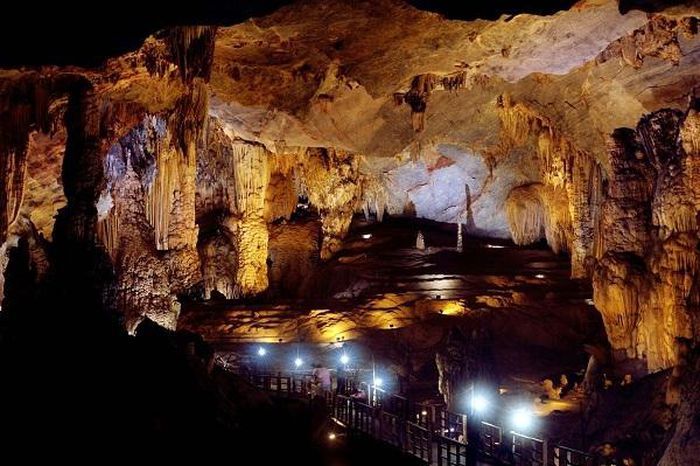
Phong Nha – Ke Bang National Park
Phong Nha – Ke Bang National Park is located in Quang Binh province – Central Vietnam with a total area of 343,300 ha. Besides the value of geological history, topography, geomorphology, Phong Nha – Ke Bang is also endowed by nature with mysterious and majestic landscapes, notably Son Doong – Cave. The world’s largest natural.
Phong Nha – Ke Bang National Park was recognized by UNESCO as a World Natural Heritage site according to geological and geomorphological criteria in 2003, and recognized by UNESCO for the second time as a World Natural Heritage with biodiversity criteria. study, ecology on July 3, 2015.
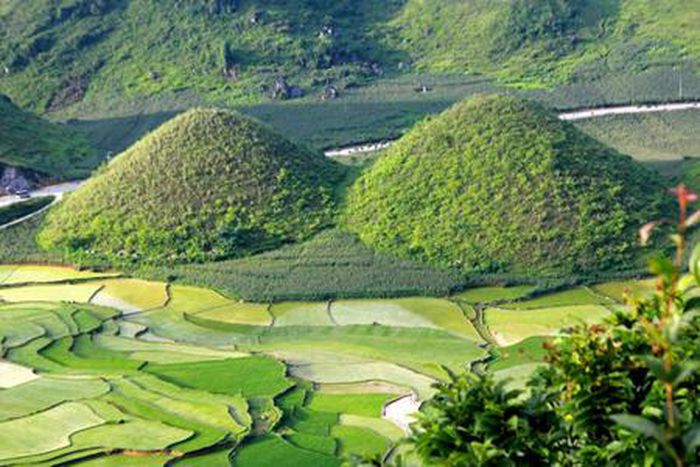
Dong Van Stone Plateau
Dong Van rock plateau (or Dong Van plateau) is a rock plateau spreading over four districts of Quan Ba, Yen Minh, Dong Van and Meo Vac of Ha Giang province, Vietnam. On October 3, 2010, the dossier “Dong Van Rock Plateau Geopark” was officially recognized by UNESCO as a Global Geopark by the Advisory Council of the Global Geoparks Network (GGN). . This is currently the only title in Vietnam and the second in Southeast Asia.

Complex of Hue Monuments
The Complex of Hue Monuments or the Complex of Hue Monuments are historical and cultural relics that were advocated by the Nguyen Dynasty to be built during the period from the early 19th century to the first half of the 20th century in the imperial city of Hue. In the past, it belongs to Hue city and a few surrounding areas in Thua Thien-Hue province, Vietnam. Most of these relics are now under the management of Hue Monuments Conservation Center and were recognized by UNESCO as a World Cultural Heritage on December 11, 1993.
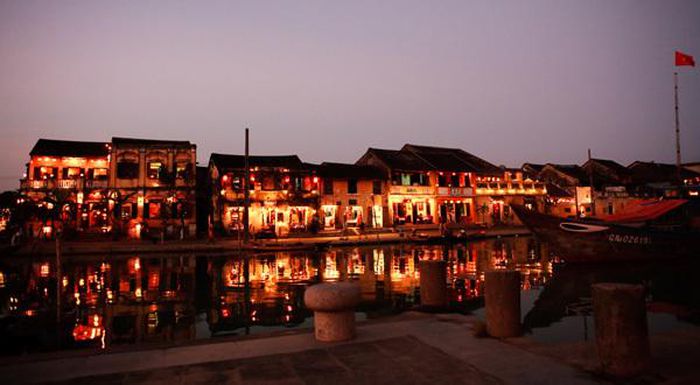
Hoi An Ancient Town
The ancient town of Hoi An today is a special example of a traditional port town in Southeast Asia that is preserved intact and thoughtfully. Most of the houses here are traditional architecture dating from the 17th to 19th centuries, located along narrow streets. Hoi An is also a land with many imprints of cultural mixing and interference. Assembly halls, temples bearing traces of Chinese people are located next to traditional Vietnamese townhouses and houses with French architectural style.
With outstanding values, at the 23rd session on December 4, 1999, UNESCO recognized Hoi An ancient town as a world cultural heritage.
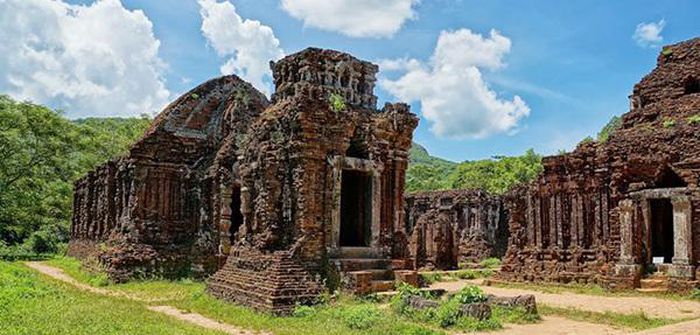
My Son Sanctuary
My Son Sanctuary in Duy Phu Commune, Duy Xuyen District, Quang Nam Province, is a complex of many Champa temples in a valley about 2 km in diameter surrounded by hills and mountains. In the past, this used to be the place to organize sacrifices as well as the tombs of the Champa kings or princes, the likes of the country.
In 1999, My Son Sanctuary was selected by UNESCO as one of the modern and modern world heritages.

Imperial Citadel of Thang Long
Imperial Citadel of Thang Long is a complex of relics associated with the history of Thang Long – Dong Kinh and Hanoi province starting from the pre-Thang Long period (An Nam dominated the 7th century) through the Dinh – Tien Le dynasties. flourished under the Ly, Tran, and Le dynasties and the citadel of Hanoi under the Nguyen Dynasty. This is a massive architectural work, built by kings in many historical periods and has become the most important relic in the system of Vietnamese monuments.
On July 31, 2010, UNESCO passed a resolution recognizing the central area of Thang Long Imperial Citadel – Hanoi as a world cultural heritage.
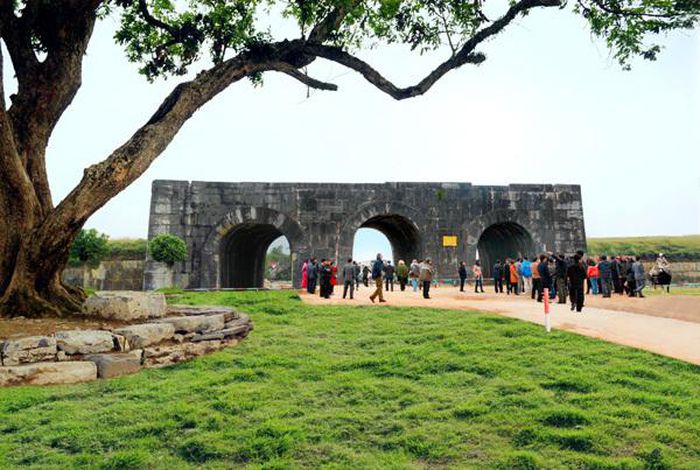
Ho Dynasty Citadel
Ho Dynasty citadel, now in Thanh Hoa province, is a solid citadel with unique large-scale stone architecture that is rare in Vietnam. On June 27, 2011, after 6 years of submitting the dossier, the Ho Dynasty Citadel was recognized by UNESCO as a world cultural heritage.
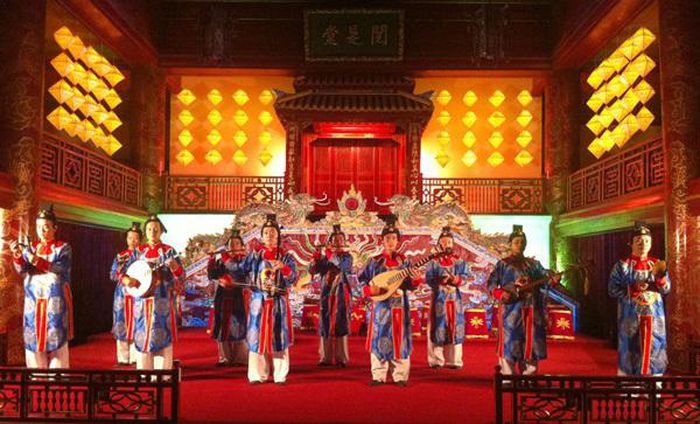
Hue royal court music
Hue royal court music is a genre of royal court music in the feudal period, performed on festive occasions (king coronation, death, other sacred festivals) in the year of the Nguyen dynasties of Vietnam. Hue royal court music was recognized by UNESCO as a Masterpiece of Oral and Intangible Humanity in 2003.
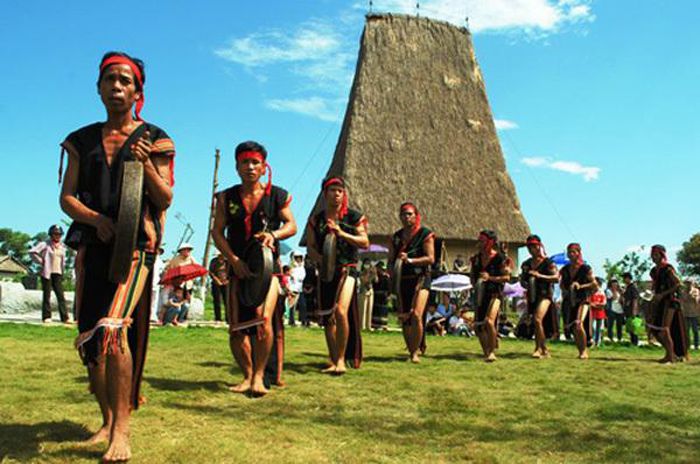
Cultural space of gongs in the Central Highlands
The Gong Cultural Space of the Central Highlands was recognized by UNESCO as an Oral and Intangible Masterpiece of Humanity on November 15, 2005. After Hue royal court music, this is the second intangible cultural heritage of Vietnam. Vietnam received this title.
The space of Gong culture in the Central Highlands includes the following components: gongs, music played by gongs, people playing gongs, festivals using gongs (New Rice Festival, Worshiping Ceremony) Water wharf…), the places where those festivals are held (long houses, communal houses, guol houses, fields, wharves, grave houses, forests next to the villages of the Central Highlands, …)

Quan Ho folk song
Quan ho folk song in Bac Giang and Bac Ninh is one of the typical folk songs of the Red River Delta in the North of Vietnam. It is also known as Kinh Bac Quan Ho folk song because it was formed and developed in the ancient Kinh Bac cultural region, especially the border area between Bac Giang and Bac Ninh provinces today. On September 30, 2009, UNESCO officially recognized Quan Ho as an intangible cultural heritage of the world.
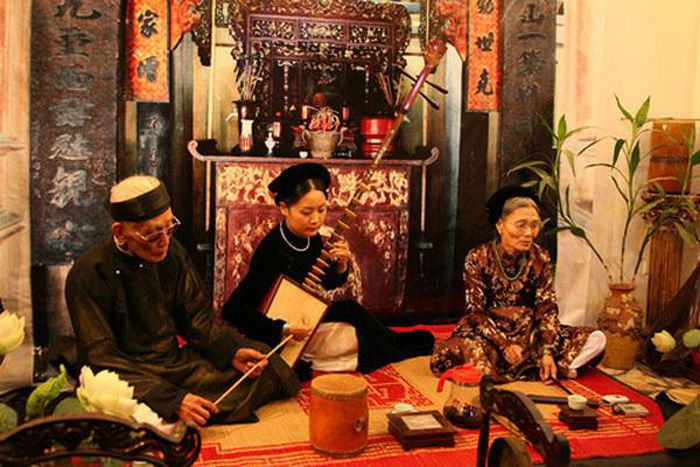
Ca tru
Ca Tru singing is a traditional art in the North of Vietnam[1] that combines singing with a number of ethnic musical instruments. Ca Tru has been in vogue since the 15th century, used to be a type of royal song and was loved by the nobility and intellectuals. Ca Tru is a smooth and top-notch combination of poetry and music.
On October 1, 2009, at the 4th session of the Intergovernmental Committee of the UNESCO Convention for the Protection of Intangible Cultural Heritage (September 28 to October 2, 2009), ca tru was approved by UNESCO. recognized as intangible heritage in need of urgent protection.
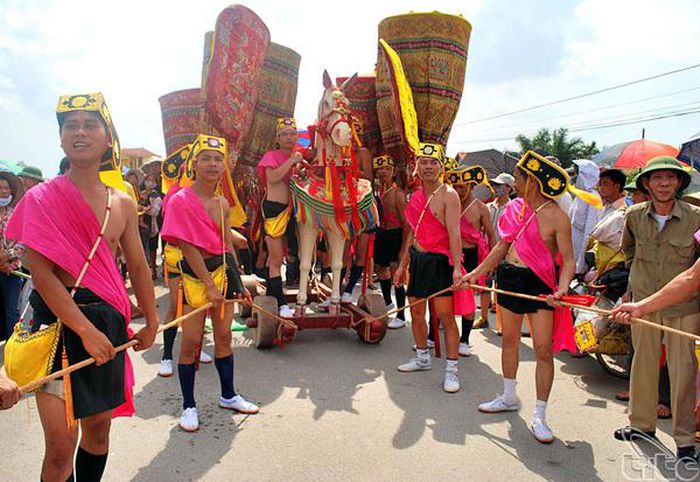
Giong Festival
Giong Festival is a traditional festival held annually in many localities in Hanoi to commemorate and praise the feats of the legendary hero Saint Giong, one of the four immortals of Vietnamese folk beliefs. In 2010, the Giong festival at Phu Dong temple (Gia Lam) and Soc temple (Soc Son district) were recognized by UNESCO as an intangible cultural heritage of humanity.
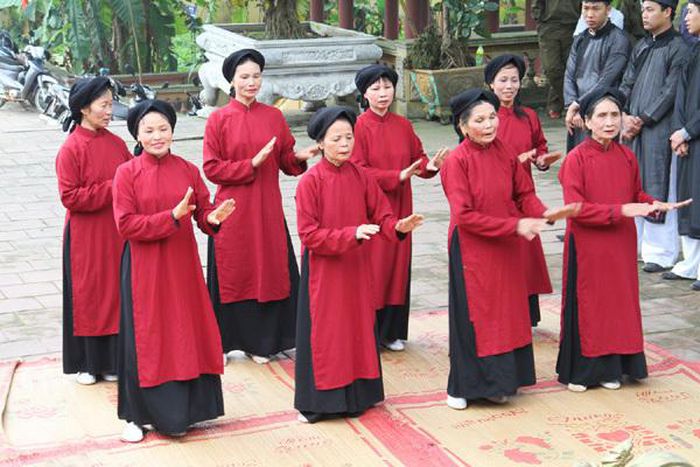
Phu Tho Xoan singing
Xoan singing, also known as Khuc Mon Dinh (singing at the communal house), is a way of worshiping gods, which is said to have existed since the time of the Hung Kings. In the past, Van Lang people held Xoan singing in spring to welcome the new year.
In 2011, Xoan singing was recognized by UNESCO as an intangible cultural heritage of humanity.

Belief in worshiping Hung Vuong
Belief in worshiping Hung Vuong is a type of folk belief that has been handed down for a long time in Vietnam, with the focus on Phu Tho province. This type of belief has been registered by the Ministry of Culture, Sports and Tourism of Vietnam on the List of National Intangible Cultural Heritage (phase 1) and recognized by UNESCO as the Representative Intangible Cultural Heritage of Vietnam. humanity in 2012.

Don ca tai tu is a Vietnamese folk music that was recognized by UNESCO as an intangible cultural heritage in 2013. Don ca tai tu was formed and developed at the end of the 19th century, originating in ceremonial music, Hue royal court music and folklore
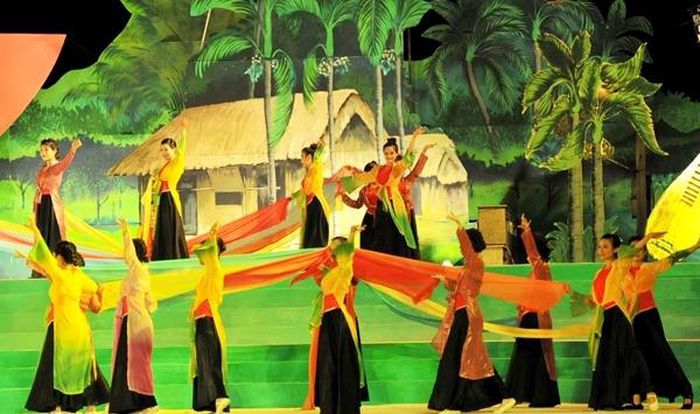
Ví giặm Nghệ Tĩnh
Nghe Tinh vi, Giam folk song is a type of folk performing art that occupies an important position in the cultural life of the people of Nghe An and Ha Tinh provinces in central Vietnam. Vi Giam folk song was recognized by UNESCO as an intangible cultural heritage on November 27, 2014 in Paris (France).
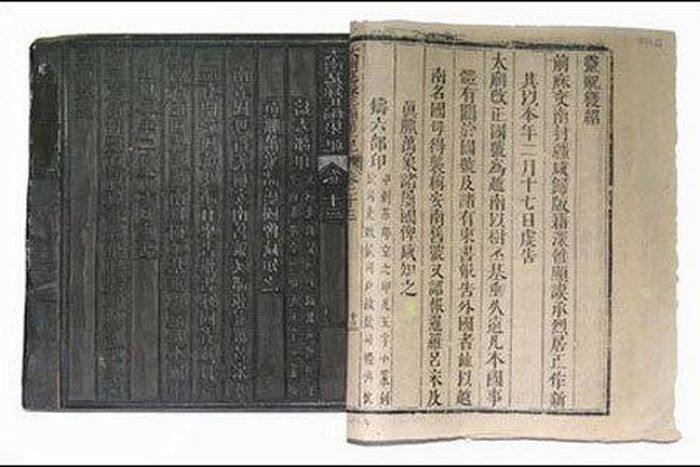
Woodblocks of Nguyen Dynasty
Woodblocks of the Nguyen Dynasty are the first world documentary heritage in Vietnam recognized by UNESCO on July 31, 2009. Woodblocks of the Nguyen Dynasty include 34,618 panels, which are Han-Nom texts that were carved backwards on wood to print books in Vietnam in the 19th and 20th centuries.

Doctoral stele of Van Mieu – Quoc Tu Giam
With special cultural and historical values, at the beginning of March 2010, 82 steles of doctoral degrees of examinations under the Le – Mac dynasties (1442-1779) at the Temple of Literature – Quoc Tu Giam (Hanoi) were recognized by UNESCO. recognized as World Documentary Heritage.

Woodblocks of Buddhist scriptures at Vinh Nghiem pagoda
Vinh Nghiem Pagoda is known as the “Great Ancient Temple”, the largest Buddhist center of the Tran Dynasty, where there are Chinese documents recognized by UNESCO in 2012.
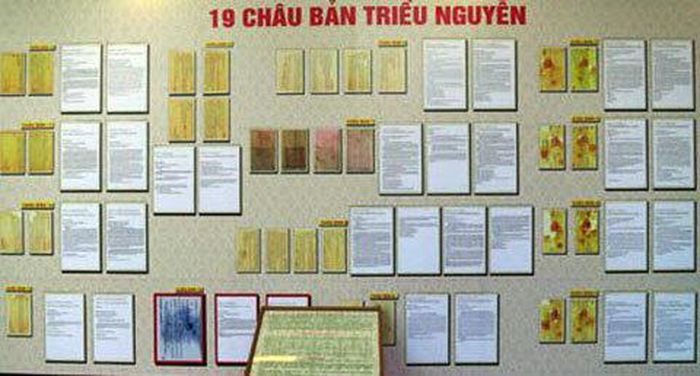
Nguyen Dynasty Version
Chau Bans are documents of the dynasty that have been “coffeeed” by the king in red ink. The Nguyen dynasty manuscripts are administrative documents formed during the state management of the Nguyen Dynasty (1802 – 1945), the last dynasty in Vietnam’s feudal history, including documents of agencies in the Nguyen Dynasty. Central and local government apparatus submitted to the king for approval, the king’s documents promulgated together with a number of diplomatic documents and restrained poetry.
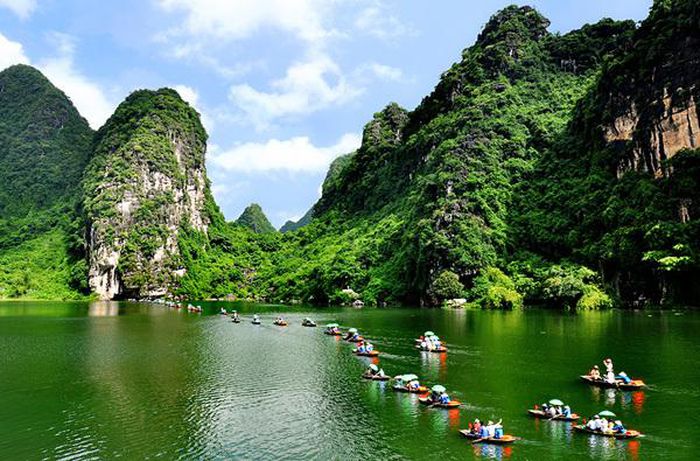
Trang An Scenic Landscape Complex, Ninh Binh
Trang An is one of the places with the most beautiful and charming karst tower landscape in the world. Covering the landscape are forest carpets and majestic cone-shaped towers 200m high, with narrow closed hollows, surrounded by interconnected ridges, and interconnected swamps through a system of underground streams with a length of up to up to 1 km.
In addition, this place also owns scenic relics that have been ranked as particularly important national monuments by the Vietnamese government such as Trang An eco-tourism area, Tam Coc – Bich Dong tourist area, Bai pagoda. Dinh, the ancient capital of Hoa Lu.
On June 23, 2014, in Doha, with the absolute consensus of the World Heritage Committee, Trang An Scenic Landscape Complex officially became the first mixed world heritage of Vietnam.
Sources of Law Newspapers: https://sao.baophapluat.vn/tin-tuc/chi-tiet/tu-hao-voi-22-di-san-the-gioi-tai-viet-nam-31574/
RELATED ARTICLES
HERITAGES OF VIETNAM